Does Annie Hopper’s DNRS really work? An honest review and breakdown of her program
Is it a sincere treatment or snake oil? Here’s one skeptic’s attempt to reverse EHS
For those of us with any one of the exploding complex and chronic conditions like EHS, MCS, chronic fatigue, Lyme, fibromyalgia, even anxiety and MCAS, promise of a “cure” is a tantalizing offer. Most of us have seen umpteen doctors, received feckless (or even counter-productive) medications just so we can survive the day — all without any guarantee of recovery. We’ve tried diets, supplements, you name it.
And we’re fed up, dejected, and we’re downright desperate.
Enter Annie Hopper and her Dynamic Neural Retraining System (and her similar counterpart, Gupta).
Capitalizing on the emerging field of neuroplasticity, Annie makes a compelling argument rooted in her own victory over her severe multiple chemical sensitivity (MCS).
According to her (and the researchers she cites, as none of this is Annie’s personal intellectual property), the brains of us with any of the previously mentioned conditions can resemble a traumatized state, as in cases of those with PTSD.
When this happens, the toxin or stressor that initially broke us, such as mold in her case, or excessive wireless radiation in mine, alters the neural pathways in the brain to respond to future exposures with a higher alert, causing us to physically react to much lower thresholds of said stressor than we normally would have.

It’s our brain’s defense mechanism, basically, and originates in the limbic system, which also responsible for emotional processing as well as managing potential threats (think fight-or-flight response).
This whole process is actually proof of neuroplasticity since neural networks have reacted and “adapted” to more readily warning us of future threats.
So just like how neuroplasticity initially changed our brains for the worse, she (and again, the research she sites) postulates that the brain can be “retrained” to extinguish the threat or fear response, so we no longer react to these minuscule doses — whether it be of mold, EMFs, stress, excessive exertion (like in CFS)
While Annie focuses on MCS, she claims that other complex conditions can be “cured” with a similar process.
Now, this concept may sound a little kooky, but I’ve read some of the books that inspired her program (after the fact), and the information checked out with everything I already knew about the brain.
So while it may seem like a brand new program, the core of the DNRS repurposes established research on neuroplasticity and trauma and incorporates tried-and-true therapeutic techniques like cognitive behavioral strategies and exposure therapy.
How much does this cost?

For somewhere in the neighborhood of $250 $350, you can follow along with the live retreats she hosts, or purchase the 8 DVD set and workbook. I was fortunate enough to scoop it up from Ebay for much less than that, considering the last DVD was a meditation, and the first “introduction” DVD was almost entirely her personal testimony.
In fact, I’d say at least 1/4 of the content was testimonies, other participants’ impressions, along with evidence for neuroplasticity and links to Youtube videos. Take that as you will.
Alright, Annie, I get it: the goal here was to shift our core values — to incontrovertibly convince the audience that their health complaints are a result of a “limbic impairment” (which is partially true and necessary for success), but it felt like she was padding those DVDs with content to appear more substantial. The brief neuroanatomy lesson was important, but I often found myself sighing, come on, already.
Parts also reminded me of a cheesy infomercial: not that this should get in the way of a life-altering treatment, but her style just didn’t vibe with me. Maybe it’s because I’ve worked in sales so long, I can sniff out that “salesman” attitude, I dunno.
Fluff aside…how does it work?
If you haven’t noticed by now, half the goal of this program is to alter your core beliefs. You need to fully embrace the reality that your symptoms are not signs your body is shutting down, but instead, recognize that your brain is over-reacting and sending a bunch of signals to your HPA axis and autonomic nervous system (ANS), which can manifest as any number of the myriad of symptoms seen in lyme, MCS, EHS, and so on.
This is…..partially true, but I digress.
Through a series of steps, you slowly reroute the neural traffic on your “trauma” highway the right way to help your brain respond to a would-be threat the way it used to, you know, without freaking out. So how the heck do you do that?
Here’s the process

“Stop! Stop! Stop!”
The first step is to immediately stop thoughts related to your condition in their tracks. Not forcefully, but gently remind yourself it’s your brain acting up and immediately shift your mind to something else.
Your subconscious brain (the part that causes these issues in the first place) watches your conscious thoughts and adapts accordingly, so if it notices you dwelling on your pain or anxiety, you will feel more pain and anxiety. Crazy, right? Why do you think psychoanalysts were obsessed with it?
Also, for anyone who’s interested, this is a therapeutic approach to treating OCD, so it is science-backed.
The mantra
The previous step is so important, in fact, Annie builds into her mantra, which you are supposed to repeat 1–2 hours every day. In addition to dedicated hour-long blocks, any time you feel a “symptom” or experience an intruding thought, you follow through with this mantra, which cycles through a series of steps reminding yourself that your brain is merely “over-firing” and “stuck in a rut.”
Then, you spin it towards the positive by reaffirming yourself that you “choose to rewire your brain.” You thank your brain for trying to take care of you, literally tell it to calm down, then conjure one of your fondest, warmest memories to overwrite the stress hormones and flood your brain with serotonin and oxytocin so it physically can’t engage fight-or-flight mode.
Repeat this process a bazillion times each day for six months to crystallize the changes. In the meantime, under a controlled environment, slowly expose yourself to triggers while repeating the mantra to drive the fear and physical response into extinction.
Oh, and don’t forget to change your routine to further aid those new neural pathways (because so many of us have the freedom to do that *eyeroll*)! Anyway, if by that she meant grocery shopping on Tuesday instead of Thursday, I know I nailed this part.

The exposure
Exposure therapy is a highly effective method for tackling phobias (read: traumatized brain), but I don’t think it works as well with other conditions as it does MCS.
In Annie’s case, the moment she’d smell an artificial fragrance, she’d react, so these responses were both acute and in reaction to a physical stimulus she could perceivably detect, which allowed for that controlled environment.
In my case, it’s extraordinarily difficult to expose myself to the right dosage of EMF, and I’d have no idea how someone with fibromyalgia or chronic fatigue would go about this since symptoms aren’t always provoked by the same stressor at the same dosage.
Also, I’ve never acutely reacted: it always takes a little while, sometimes even days of prolonged exposure before I begin to feel the effects. It also depends on my general health, so the best I could do is use my phone for an indefinite amount of time, which I wouldn’t know would otherwise affect me anyway.
The last ingredient of this cerebral recipe is positive thought. Again, you want your subconscious brain watching your conscious brain wandering down happy little trails so it knows where to pave healthier neural roads.
Follow these steps, Annie assures us, and we’ll likely see a massive reduction in symptoms before the completion of the program.
But did it work?

Nope, it sure didn’t. I’ve literally had greater symptom reduction after sipping some magic mushroom tea (no, I’m not kidding. More on this later).
What it did do, however, was open the door to a better understanding of MCS/EHS as a condition involving trauma; it also removed the acute fear response, which was no small paradigm shift.
I looked at triggers through a calmer, more balanced lens, and learned that most smaller reactions were due to my poor, confused threat response instead of my body crumbling beneath the exposure.
It also offered consolation that others have battled with this condition and recovered, so I suppose I ultimately paid for peace of mind. And technically, I guess you can’t put a price on that.
But that wasn’t what I was paying for. And since I had also purchased the program at a VERY low point — just after a huge period of EMF exposure that hit me blind-sighted, I can’t say that my body wouldn’t have readjusted over time like it always had before.
It wasn’t a total bust, but still a little lackluster
I might be overly critical, as this has clearly worked for other people, but because treatments for these complex conditions are still in their infancy, programs such as DNRS are still pretty rough around the edges and overall, a bit lacking.
You may need a personalized approach, whether a therapeutic one like this or a physical one like nutrient balancing, antioxidants, or heavy metal chelation. No amount of DNRS can solve that.
So in my humblest opinion, I just feel these programs lie on the spectrum of predatory advertising, even if they can help.
Even if it had reversed my sensitivity, this isn’t novel $250 $350 information. It already exists in book and video form: I just didn’t know where to look or enough about EHS to understand the fear avoidance so intimately.
Alright, I’ll give Annie some credit for gathering this all in one tidy, albeit pricey package. She was on the right track, but that expensive train never reached the right station.
In case you’re interested, these are some of the books either she recommends or that I found insightful:
- Biology of Belief by Bruce Lipton
- The Brain’s Way of Healing: Remarkable Discoveries and Recoveries from the Frontiers of Neuroplasticity by Norman Doige
- Breaking the Habit of Being Yourself by Joe Dispenza
- Hardwiring Happiness: The New Brain Science of Contentment, Calm, and Confidence by Rick Hanson
- Molecules of Emotion by Candace Pert
- Change Your Brain, Change Your Life: The Breakthrough Program for Conquering Anxiety, Depression, Obsessiveness, Anger, and Impulsiveness by Daniel G. Amen
- Train Your Mind, Change Your Brain by Sharon Begley
- Brain Rules by John Medina
I also highly encourage an exploration in to Yogic philosophy, which was where most these concepts originate
Final Thoughts

Maybe I didn’t complete the DNRS with an open enough of a mind or recite enough mantras. Maybe I need to still address some of the physical deficits from exposure. Maybe I’m just a tough nut to crack.
But believe me, I wanted to sing the praises of her program because neuroplasticity is such a profoundly beautiful form of physical and mental therapy.
I wanted to get better and move on with my life, but instead I’m sitting here with a USB keyboard plugged into my (hardwired) laptop to prevent my heart from skipping beats again.
Update:
Since I purchased this program in the Summer of 2021, Annie has raised the price of DNRS by $100. For this reason, I’m doubling down on my conclusion that her program really isn’t worth the price. Stick around and we’ll discuss some alternative methods for recovering and address some of her blind spots.
Update 2:
I have, by the grace of all the gods, successfully reversed all of my chronic conditions using other techniques and modalities, which, fascinatingly, share some of the same roots with the theories behind this program.
I’m not changing my opinion on Annie Hopper; I still hold that she’s circling the target without ever hitting it, but I most certainly cannot keep these successes all to myself!
Truly, the occulted nature of our world never ceases to amaze me. Healing is always possible.


